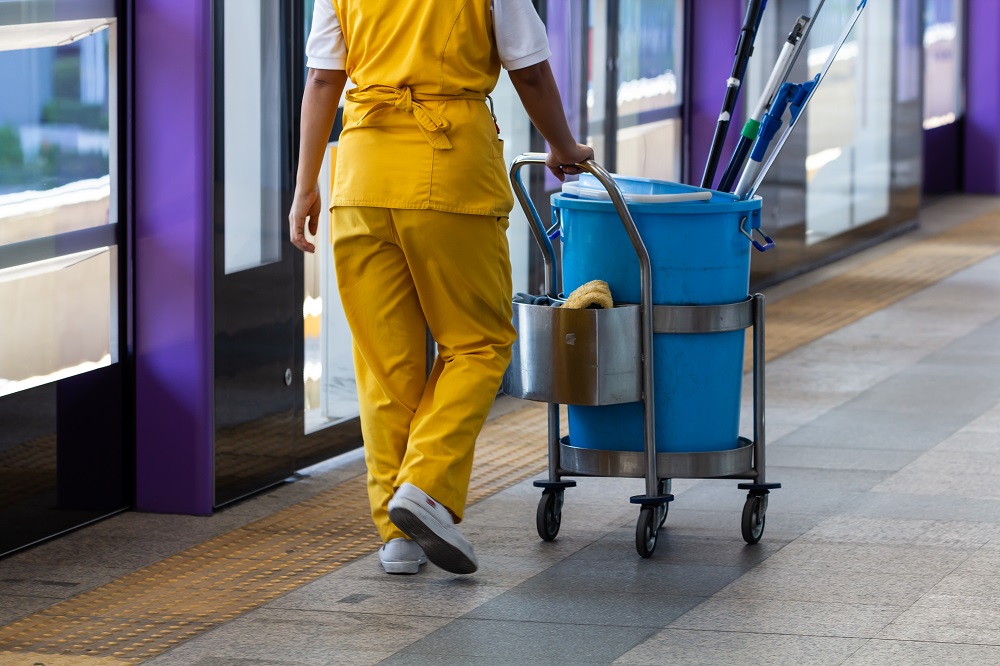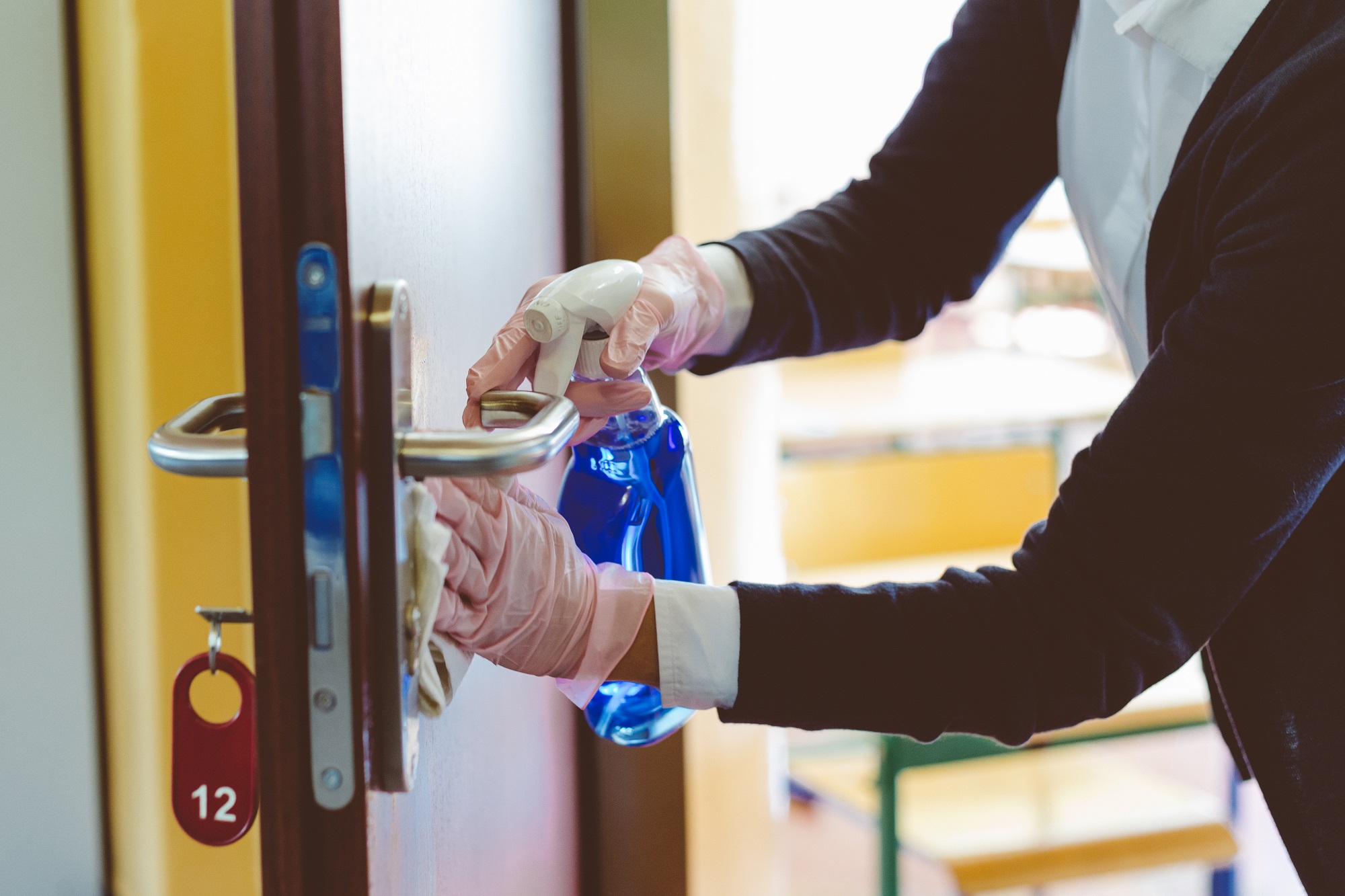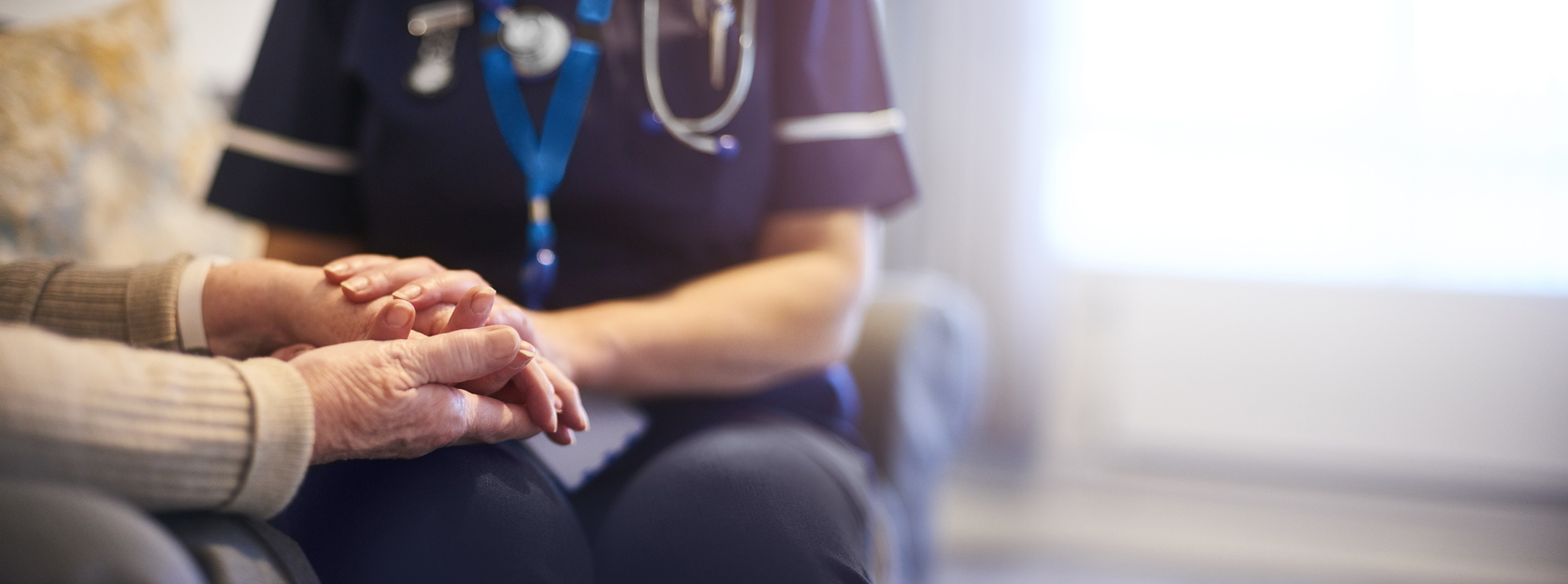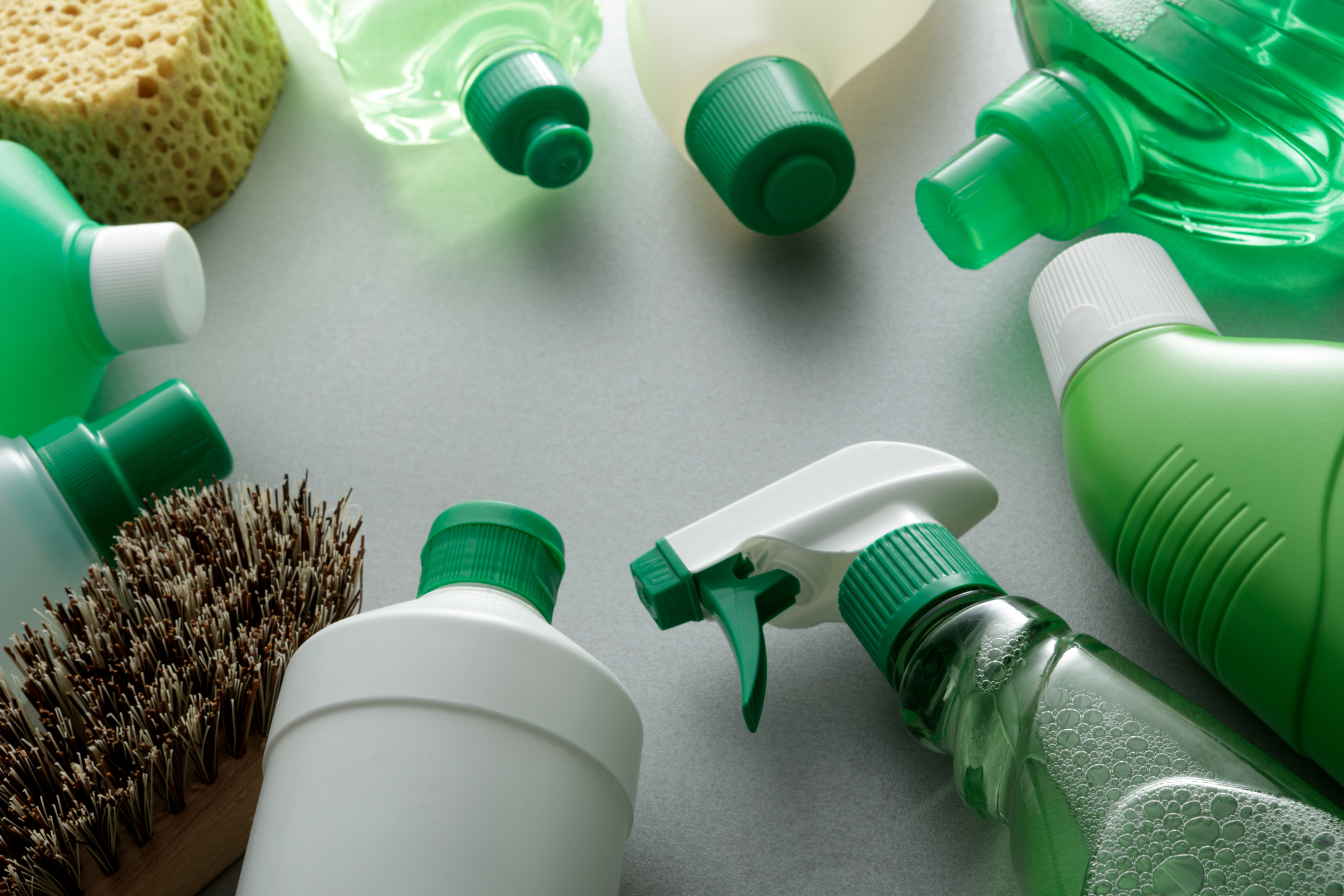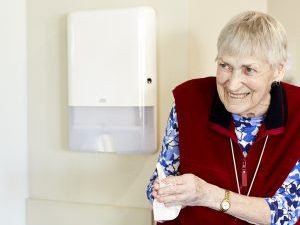
In vulnerable aged care centres, the pressure is on facility managers and cleaning contractors to protect patients and residents from life-threatening infections.
As infection-prevention expert Dr Greg Whiteley considers the plight of aged care facilities dealing with COVID-19 and deadly bugs, he laments that they cannot replicate one action that many hospitals are taking to combat the problem.
In the hope of minimising infections, hospitals are simply discharging patients much faster, where possible. “But you can’t do that in aged care,” says Dr Whiteley, chairman of Whiteley, a manufacturer of sterilants, disinfectants and professional cleaning technologies.
“People are in those facilities and going through progressive levels of care and, in some cases, they could be there for years. If they catch one of these bugs, they can die quite quickly and unnecessarily.”
Dr Whiteley and his team are at the forefront of efforts to ensure that facilities such as aged care and retirement homes are healthy and hygienic.
Arguing that the fight to safeguard aged care residents is “moving at a glacial pace”, he also warns cleaning contractors to get their disinfection and hygiene systems right, or risk facing possible reputational and legal repercussions.
“Because with modern genetics you can track who got the bug first, where it went to on surfaces, who then touched it and who got the bug,” Dr Whiteley says.
In short, there is no place to hide if cleaning contractors do not do their job.
Adopting best practice
For facility managers and cleaners in the aged care space, there is a duty of care to ensure a high standard of hygiene, even with hard-to-clean areas and furnishings. Some suggested actions include:
- Target high-traffic touchpoints – wipe down and disinfect beds, door handles, light switches and other vulnerable touchpoints. Disinfect such surfaces regularly and also address high-traffic areas for staff.
- Maintain good hand hygiene – this is essential before cleaning, after cleaning and whenever changing gloves, in particular. Hand washing is especially important.
- Remove spills quickly – facilities and cleaners should have policies in place to deal rapidly with spills as they pose a high infection risk. After removing spills, disinfect the surface and rinse with water.
- Focus on floors – consider adopting microfibre cloth or steam-cleaning technology. With vacuuming, use high-quality HEPA filters to reduce the spread of bacteria.
The other big issue that will remain on the radar at aged care facilities is indoor air quality, with proper ventilation and filtration of buildings being crucial. This includes the need for high standards of carpet care, as well as heating, ventilation and air-conditioning (HVAC) maintenance.
Steve Agar, joint managing director of Agar Cleaning Systems, believes the imperative to protect the elderly in aged care centres presents an opportunity for the development and deployment of innovative and adaptable chemicals that can really make a difference to health and hygiene outcomes.
He cites the example of U-Remove, which uses biologically active ingredients to digest and consume organic soilage and uric acid salts left by urine in fabrics and carpets. It can also remove odours caused by vomit, faeces and perspiration.
“It’s an environmentally preferable way to go, but it also removes the source of harmful bacteria growth and odour,” Agar says. “That’s an example of where there are some good developments in products that can help solve problems in aged care.”
Agar Cleaning Systems is a chemical formulator and manufacturer, with its range including regulatory approved products such as CounterFlu and peroxide-based Virattack (hospital-grade disinfectants that kill viruses, including COVID-19, germs and bacteria).
Originally developed for other tasks, Agar says they have become “key weapons” against the coronavirus.
“CounterFlu was developed for the flu, but when the pandemic broke out it was the product that we thought would be most effective in dealing with COVID and, following successful test results, it subsequently got regulatory approval.”
One of the keys with the use of chemical agents in aged care facilities, according to Agar, is to limit the emission of volatile organic compounds (VOCs) that can pose multiple health risks, especially to people with respiratory illnesses.
“You want products that don’t present unpleasant odours or chemical vapours,” he says.
“Also, in aged care sites you’re dealing with unpleasant issues such as residents soiling the floors and carpets. So, cleaning products that can neutralise odours and clean effectively are important.”
Ultimately, cleaning products must be fit for purpose, including any green products.
“There are definitely applications in aged care where a product with green credentials will be satisfactory, whether it’s floor care, washroom care, heavy-duty cleaning and utility areas,” Agar says. “But the one area where green is challenging, if you’re looking for certified green products, is with disinfection.”
Education the key
The Australian Department of Health and Aged Care reports that for the period from January 1, 2022, to August 12, 2022, COVID-19 was recorded as the cause of death in 7.3 per cent of all deaths among permanent residents in aged care facilities.
Since the beginning of the Omicron outbreak in late November 2021, there were 43,355 deaths in residential aged care from all causes, with COVID-19 deaths accounting for 6.5 per cent of this figure.
Lucas Paris, managing director – Australia of cleaning machine distributor Motorscrubber, says it is apparent that more rigour is required with cleaning in the aged care sector. If not, more tragedies and loss of life will occur.
“The light has been shone on the industry and it highlighted the fact that a lot of practices being used in aged care facilities were antiquated. People paid the ultimate price when it could have been avoided if there was greater education on cleaning processes and tools.”
Paris says poor management of air quality and touchpoints, as well as a failure to properly embrace masks and face shields, have been among the issues.
As a company that supplies floor-cleaning equipment, Paris also hopes that the importance of clean and hygienic floors will become better understood in the future.
Motorscrubber is counting on products such as Blade (a rubber squeegee blade that targets grout lines and tight edges) and the Storm disinfectant sprayer (for fast treatment of common touch points) to up the ante in aged care residences.
For Lucas, the imperative when cleaning aged care centres – or any other facilities for that matter – is following the right procedures and getting the right education.
“If you use an approved disinfectant that ticks all the boxes, it will kill everything,” he says. “But if the people using it aren’t giving it the right lag time on the surface, or if they’re not cleaning the surface beforehand, or if they’re using subpar cloths, all of these things will impact the ability of the site to stay safe.”
Agar agrees that understanding the difference between products and how they should be used is critical.
“Otherwise, there’d just be the one cleaning product,” he says. “Different products are formulated to sometimes incompatible criteria, so we need to make sure that each product is applied where it’s supposed to be.”
He adds that it is crucial to strike a balance with chemical use – the goal is to minimise the volume of chemicals used while ensuring there is enough chemical action to get the job done.
“In some ways aged care facilities are relatively clean,” Agar says.
“But it’s what you can’t see that’s critical. Heavy disinfection and neutralising of odours is important, and you need to have the right products for those issues.”
The next phase
As COVID-19 becomes more of a background endemic health issue in the years to come, Dr Whiteley expects the focus to switch back to deadly bacteria.
He notes that the global mortality rate for COVID-19 is about 1.3 for every 1000 people who contract the virus, whereas for bacteraemic cases that death rate rises to about three to five people for every 10.
“Therefore, you’re 10 to 100 times more likely to die and those are the bugs that we will really need to worry about in the future,” he says.
Dr Whiteley says these bugs can be carried in the air, but are mostly transmitted by contact. He explains that if people touch a surface with bugs on it, and especially if biofilm bugs are present, those bugs will stay on the hands for up to 19 subsequent touches.
“Hands are the most dangerous things in the world,” he says. “And if the bugs are on your gloves, the same rule applies.”
Such scenarios drive home the importance of rigorous hand hygiene, especially in an aged care setting where outbreaks can be devastating.
He says many cleaning companies still need to raise the bar when it comes to the quality of their work, especially in the aged-care space.
“Cleaning companies are out there making money and that’s what they’re meant to do, but I’m not sure they’ve really managed to grasp the nettle and integrate the sort of quality insurance work that needs to be done. They really need to be picking up the quality because aged care will become more and more of a focus.”
This article was first published in the November/December issue of INCLEAN magazine.
Comment below to have your say on this story.
If you have a news story or tip-off, get in touch at info@incleanmag.com.au
Sign up to INCLEAN’s newsletter.
